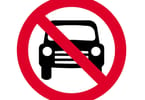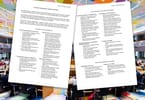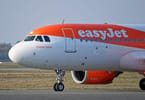April airline traffic reports showed some signs of improvement over March and airline executives pointed to stabilization in revenue and demand declines, as carriers continue to search for the bottom of the business travel recession—which analysts said could lag an economic recovery.
While airline CEOs said the revenue environment wasn’t getting worse, they also were reluctant to say it was getting better, and they reported particular softness in the corporate segment in first-quarter earnings reports last month. Buyers, meanwhile, show few signs of refreshing corporate travel budgets or relaxing policies.
Delta Air Lines president Ed Bastian, echoing sentiments shared by other airline executives reporting financial results last month, said, “While we have seen signs of stabilization in revenue trends, at the same time we haven’t seen any indications of improvement. Right now, our May and June is shaping up to be similar to a combination of March and April. In short, things aren’t good but they’re also not getting worse.”
Major domestic carriers, which reported first-quarter losses last month—save for AirTran and JetBlue, which operate largely domestic networks and are less vested in the corporate market—said premium demand for international travel remains particularly weak, and corporate travel continues to lag demand in other segments.
Corporate demand deterioration, established more than a year ago and exacerbated amid the mounting financial crisis last fall, shows few signs of recovery. The National Business Travel Association late last month released a survey that showed 84 percent of 119 travel buyer respondents reported travel budget cuts since October 2008, and 36 percent said expenditures decreased more than 15 percent.
Buyers don’t see their companies picking up travel spending any time soon, as 60 percent said they expect their business travel budgets to decrease from 1 percent to 15 percent for the full year. Ten percent expect decreases of more than 15 percent.
One buyer for a Corporate Travel 100 firm said the company remains on track to cut travel by 30 percent this year, with a budget increase of only 10 percent expected for 2010.
“Business traffic will probably lag initial economic recovery,” said UBS aviation analyst Kevin Crissey. “We expect business travel to pick up only after the expectation for healthier corporate profits is obvious.”
Carriers during earnings calls last month noted few positive indicators as tightened corporate policies shifted travelers from business class to coach, increased advance airfare purchases and curbed nonessential travel.
American Airlines CFO Tom Horton noted corporate travel revenue during the first quarter experienced “declines greater than the system average.” Noting that “a lot of companies have hunkered down rather dramatically,” American CEO Gerard Arpey said corporate travel continued to lag, but “if history is any indication, they will not stay hunkered down because travel is an integral part of their business. They need to have sales conferences, they need to go to conventions, they need to go out and drum up business. If the economy begins to pick up steam, and (U.S. Federal Reserve) Chairman (Ben) Bernanke thinks we’re making some progress, that will bode well for our traffic in the back half of this year.”
When Continental Airlines CEO Larry Kellner delivered first-quarter results on April 22, he said, “Things seem to feel better today than they did 45 days ago, but I’m not sure if that’s simply because the pace of the decline is slowing or because things are actually stabilizing.”
Delta’s Bastian said, “Corporate travel trends continue to be soft, but the pace of decline in business yields and bookings has definitely slowed. Our international book load factor is down 4 points to 6 points for May and June, but we are expecting demand to build closer as we approach the summer travel period.”
JP Morgan aviation analyst Jamie Baker last month said “demand destruction slowed in March, consistent with recent ‘stabilization’ rhetoric.” Still, Baker said revenue per available seat mile remained abysmal. “While we recognize stabilization is the precursor to recovery, we are increasingly concerned that meaningful recovery may prove several months away, whereas consensus estimates appear to be suggesting something more rapid.”
UBS’s Crissey said first-quarter financial results made a few things evident: The rate of deterioration in year-over-year unit revenue had slowed, fare sales remained “prevalent” and “international demand has gotten worse.”
A few positive indicators came with April traffic data reported this month by the largest domestic carriers. Load factors for most of the largest U.S. airlines grew year over year in April, though United Airlines and Delta reported modest declines of less than a percentage point. While promising, those trends were largely the result of capacity cuts enacted in the past year, as traffic, as measured by revenue passenger miles, remained down for most airlines. Still, the rate of annual decreases improved from March, though Easter falling in March 2008 and April 2009 has made year-over-year comparisons difficult.
Though carriers have been able to mitigate load factor deterioration through a combination of greatly reduced capacity and cheaper fares, those seats are being filled at deeply discounted prices, damaging revenue potential. US Airways president Scott Kirby said, “As the headlines got worse, airlines ran more and more fare sales, which not only impacted leisure yield, but since there are fewer and fewer restrictions, the root of fare sales have also impacted business yield.”
With load factors improving, domestic carriers in mid-April attempted a couple of fare hikes—the first attempts since July 2008. Of those attempts, Rick Seaney, CEO of Farecompare.com, said, “One of them met with sort of a demise and one was very targeted for the month of July.” Though Seaney said the impact on fares “really wasn’t much of anything,” he noted the attempts represent “at least a glimmer that maybe the bottom had been hit.” Seaney in a research note this month following the release of April traffic figures, said, “For the first time in a long time, the situation appears to be improving for the airlines. April traffic figures are showing some improvement.”
Though unsuccessful, US Airways’ Kirby said the fare moves were “attitudinally important,” claiming, “They are perhaps a sign that others are also seeing a strengthening in demand—and we are still waiting for business demand to recover.”
Delta executive vice president of network planning and revenue management Glen Hauenstein told investors last month, “We have been running relatively full airplanes even through the shoulder season, so we are hopeful that those trends continue. What have been missing here have been the business travelers.”
WHAT TO TAKE AWAY FROM THIS ARTICLE:
- April airline traffic reports showed some signs of improvement over March and airline executives pointed to stabilization in revenue and demand declines, as carriers continue to search for the bottom of the business travel recession—which analysts said could lag an economic recovery.
- Major domestic carriers, which reported first-quarter losses last month—save for AirTran and JetBlue, which operate largely domestic networks and are less vested in the corporate market—said premium demand for international travel remains particularly weak, and corporate travel continues to lag demand in other segments.
- One buyer for a Corporate Travel 100 firm said the company remains on track to cut travel by 30 percent this year, with a budget increase of only 10 percent expected for 2010.






















